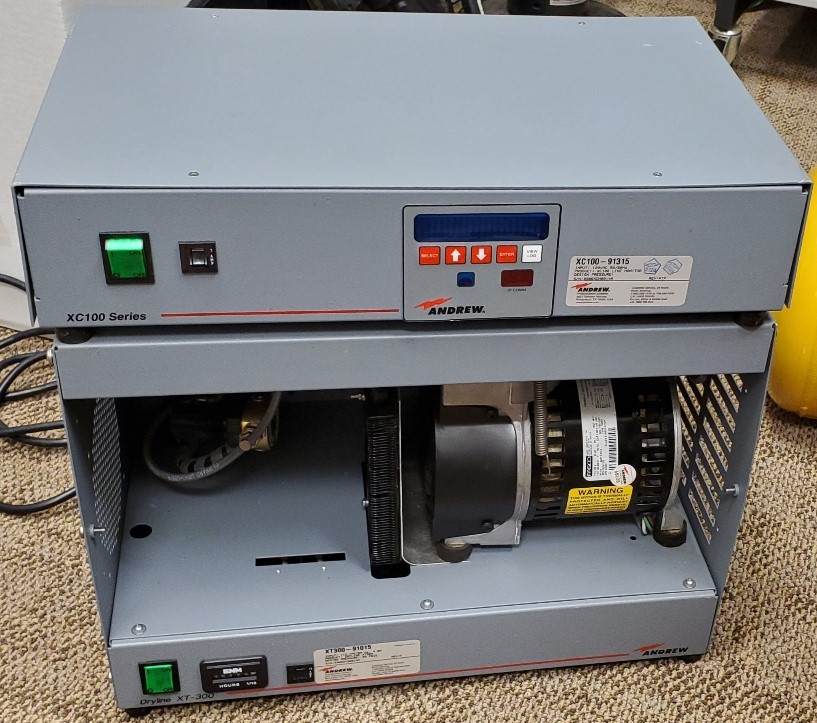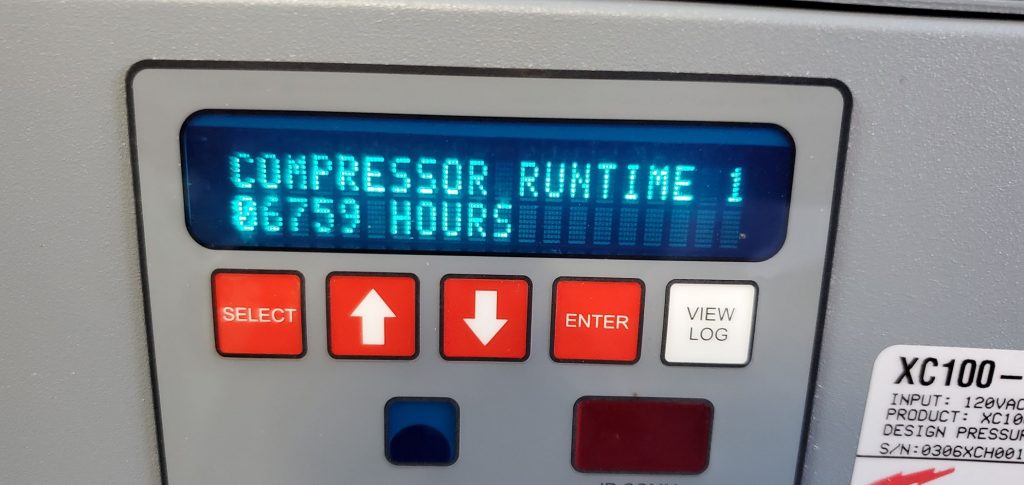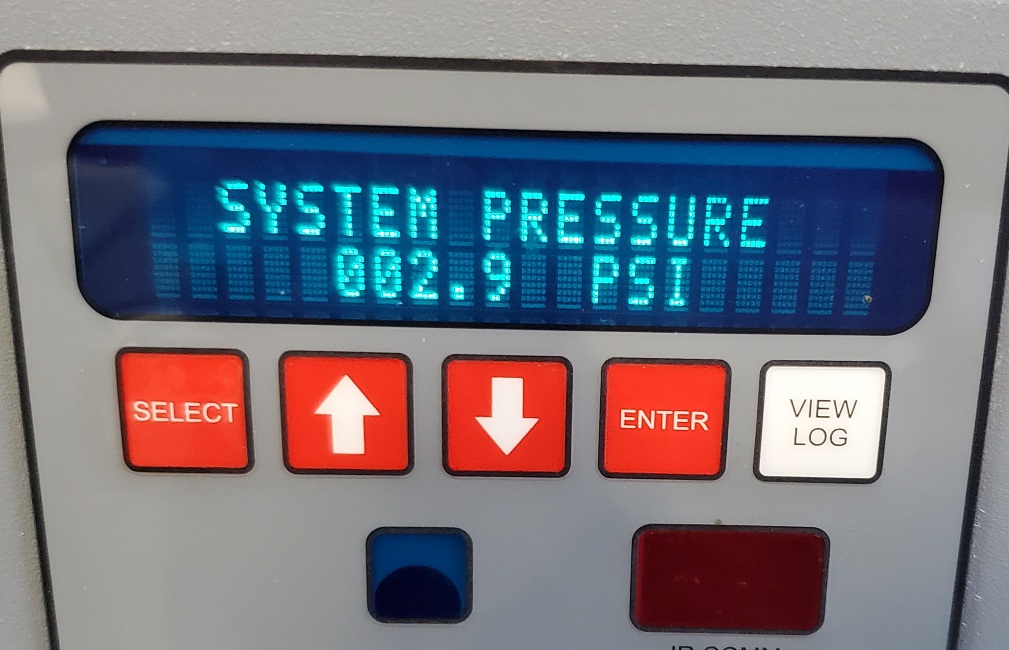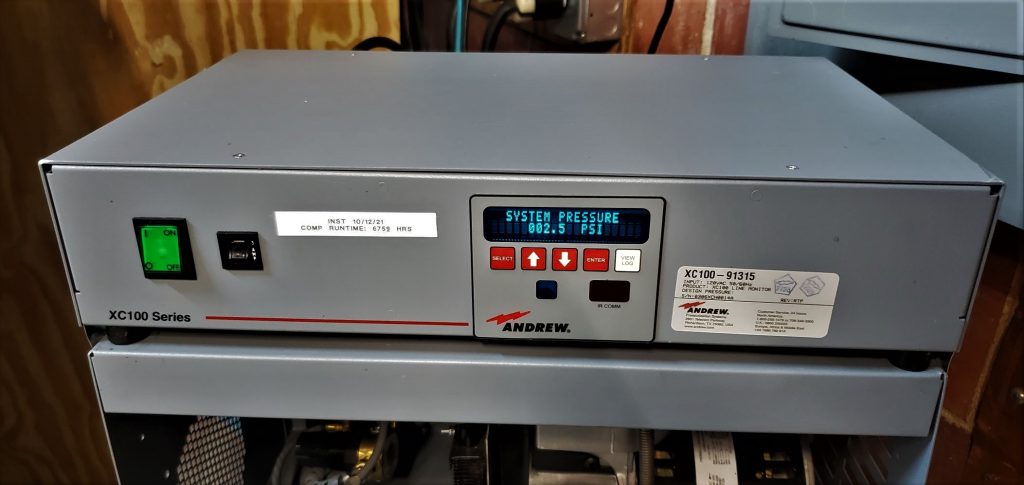Rigid metallic feedlines / transmission lines used in broadcasting need positive pressurization with dehumidified air (or with dry nitrogen.) This is done because any moisture or other contamination between the inner and outer metal conductors of the transmission line can cause arcing and severe damage to the transmission line, which runs from the transmitter’s output all the way to the antenna. The existing dehydrator system had failed, so I installed a replacement system which I had recently inspected, tested, and modified the “plumbing” on specifically for that purpose.
Failed Andrew dehydrator system
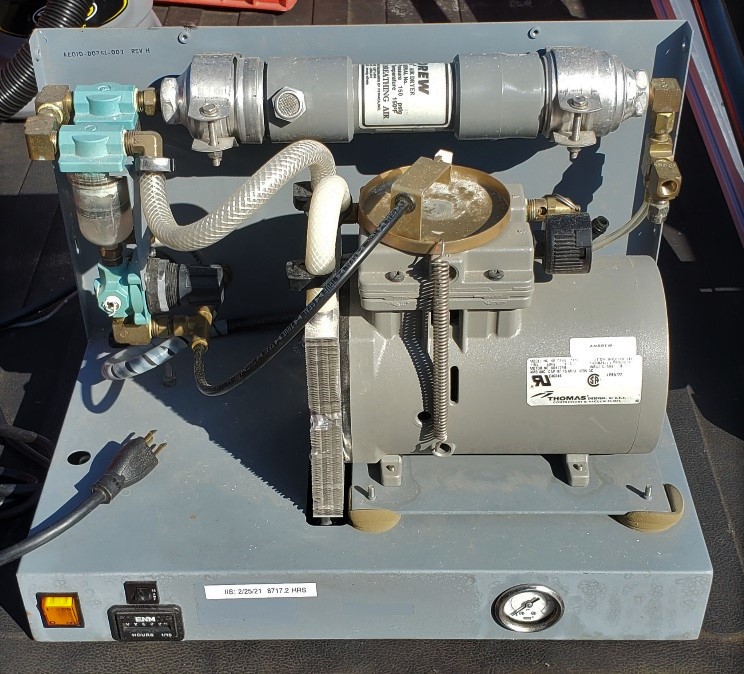

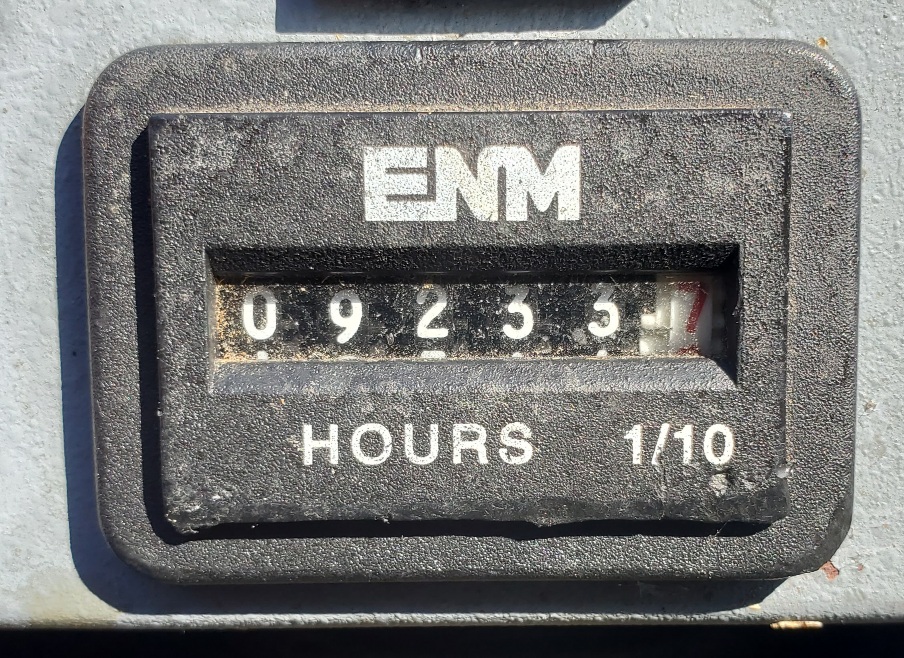
My calculations indicate that the failed dehydrator had run 516.5 hours over the course of around 221 days (just “approximating” that the dehydrator failed at the end of September 2021.) That’s roughly 5,304 hours of time (221 days x 24 hours.) That equates to a “duty cycle” of roughly 9.7%. That’s really pushing the envelope, especially for a dehydrator of this size and operating capacity. What was more disconcerting, however, was the fact that when it was first installed back on 2/25/21, it was running with a duty cycle of approximately 5%. This meant that over time it had started working harder and harder, having to run more often and for a longer time each time it switched on to rebuild the positive pressure in the feedline. I had actually noted on more recent site inspection and P/M visits that the dehydrator was running almost continuously, so in reality the duty cycle had reached roughly 100% before it failed.
Plans to do a full servicing of the rigid transmission line were already in the works. We plan to have the entire transmission feedline extensively serviced, possibly in the Spring of next year. It’s a major job (and a very expensive one) requiring the coordination of the station management, consulting broadcast engineer, and a tower rigging crew with the expertise and equipment needed to carefully disassemble each piece of the transmission line (being approximately 20′ in length each), lower each one to the ground, remove the inner conductor from the outer conductor, remove the “bullet” connectors at each end of the inner conductors, clean each piece (or replace if necessary), reassemble with new O-rings and silicone between each section, install new “hanger” hardware and springs for support and attachment to the tower… you get the idea. It’s a HUGE job and one which takes a lot of time and effort. That’s why it has to be carefully planned and isn’t something which can be done in a hurry — at least not if you want to do it right in order to minimize the risk of a future catastrophic transmission line failure. Most listeners to great stations like WKCN-FM really aren’t aware of the extensive amount of work which goes on behind the scenes to keep great programming flowing over the airwaves for them to enjoy. Nonetheless, it’s part of the major, ongoing work which is done to keep the magic of radio (or television) happening. Anyway, back to our little story of the day…
In with the new…
